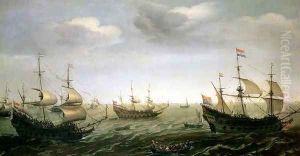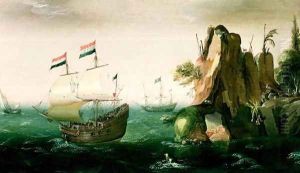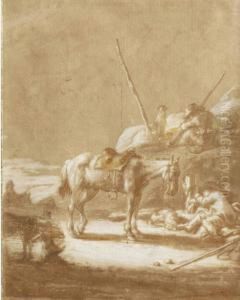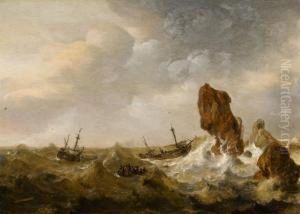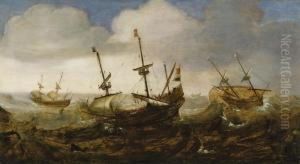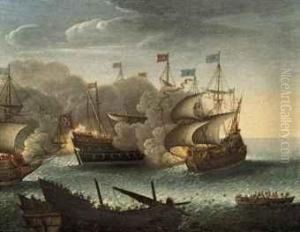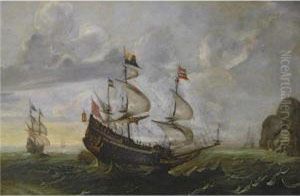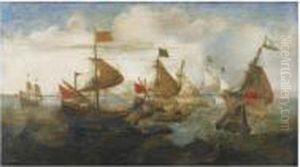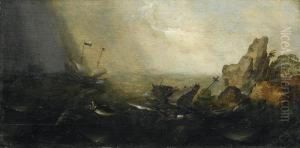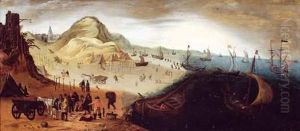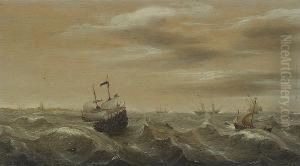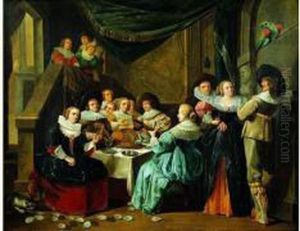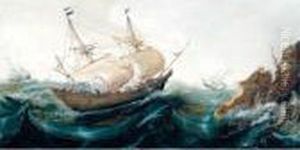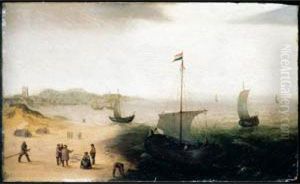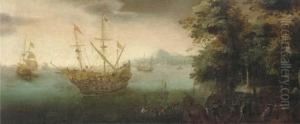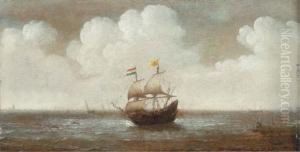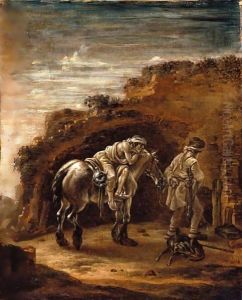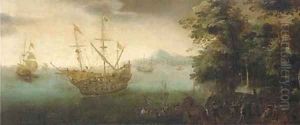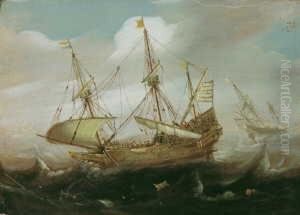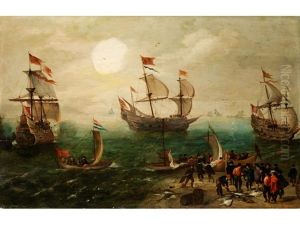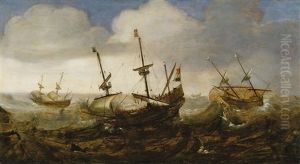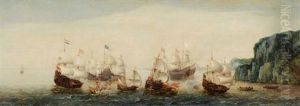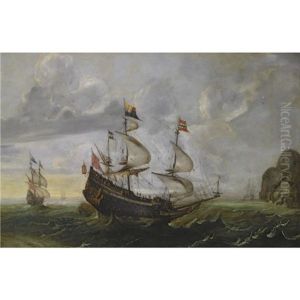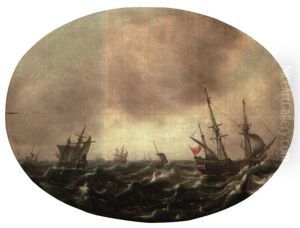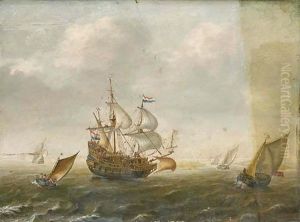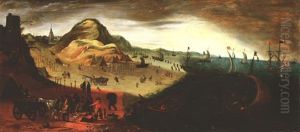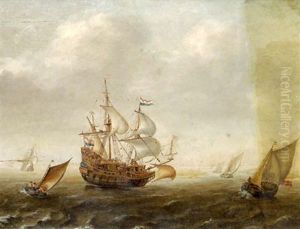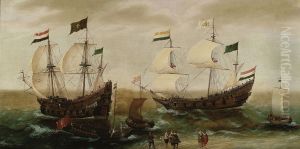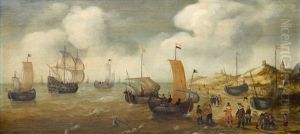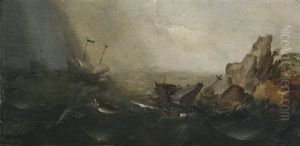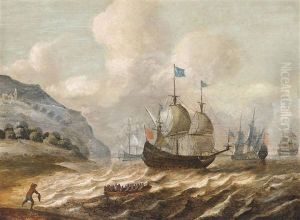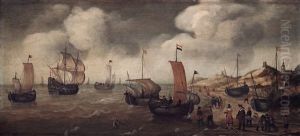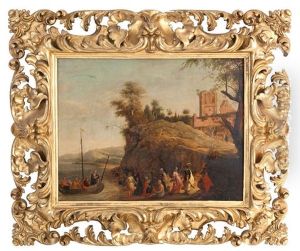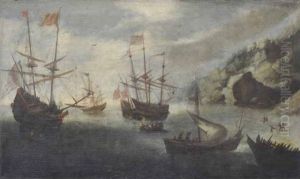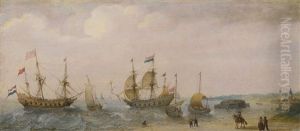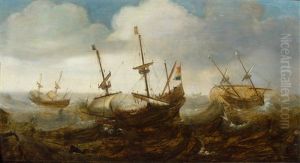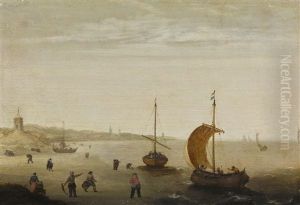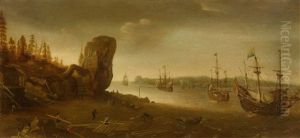Cornelis Verbeeck Paintings
Cornelis Verbeeck was a Dutch Golden Age painter, primarily known for his marine and seascape paintings. Born in Haarlem, Netherlands, around 1590, Verbeeck was part of the vibrant community of artists that thrived in Haarlem during the early 17th century. Although not as well-known as some of his contemporaries, Verbeeck's work reflects the Dutch fascination with the sea, which was a significant aspect of Dutch life and culture during this period.
Verbeeck's career unfolded during a time when the Dutch Republic was establishing itself as a major maritime power, and the demand for marine-themed artwork was high among the Dutch bourgeoisie, who were eager to display their wealth and connection to the sea. His paintings often depicted ships and naval battles, capturing the dynamic and often perilous nature of seafaring life. The artist's use of light and color was typical of the Dutch Golden Age style, and his work showed a keen attention to the details of ships and water.
There is limited information about Verbeeck's life and training. It is believed that he may have been a student of Hendrick Vroom, another marine painter of the time, who is often credited with pioneering Dutch marine painting. Verbeeck's works were modestly appreciated during his lifetime, and he contributed to the genre's development alongside other artists such as Jan Porcellis and Simon de Vlieger.
Cornelis Verbeeck's exact date of death is not well-documented, but it is generally accepted that he died in 1637 or earlier. Although his body of work is not extensive, his paintings remain valuable for their historical significance and as examples of early Dutch marine art. Today, his works can be found in various art collections and museums, offering a glimpse into the maritime preoccupations of the Dutch Golden Age.
